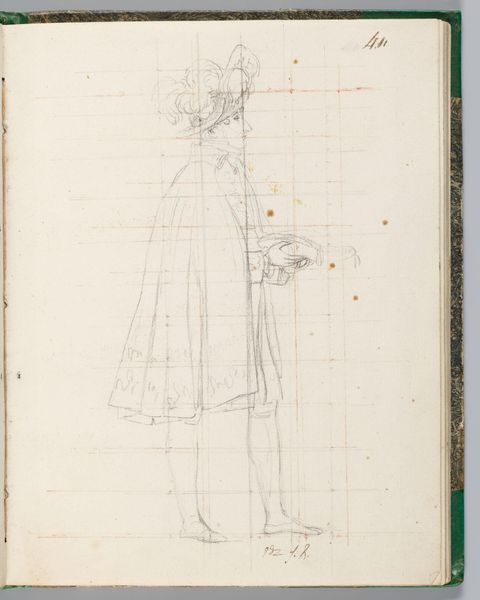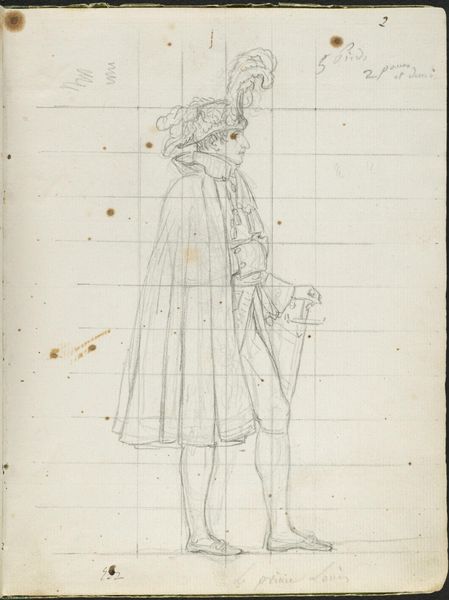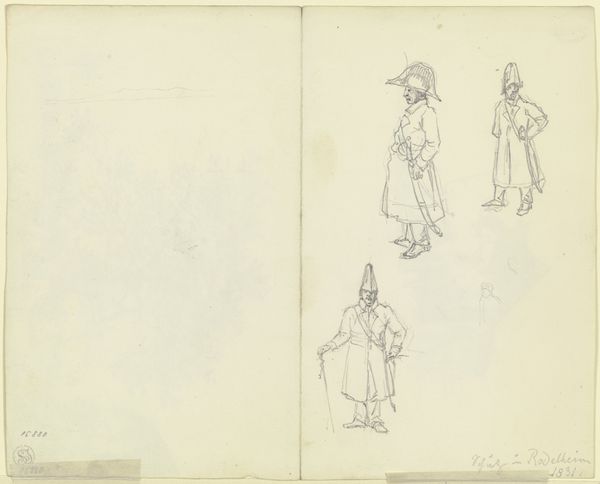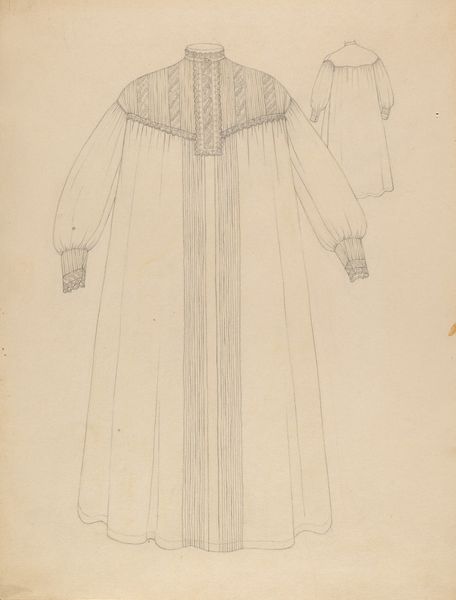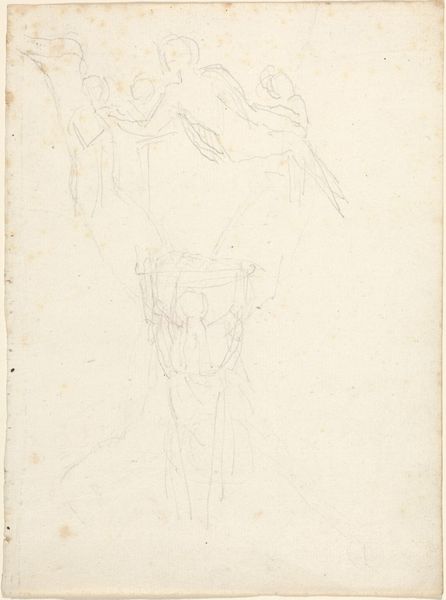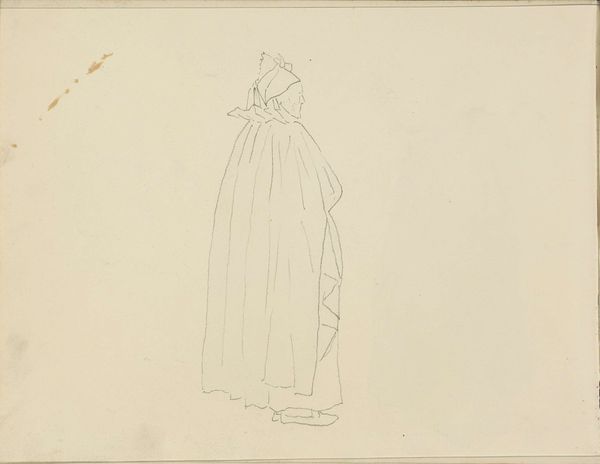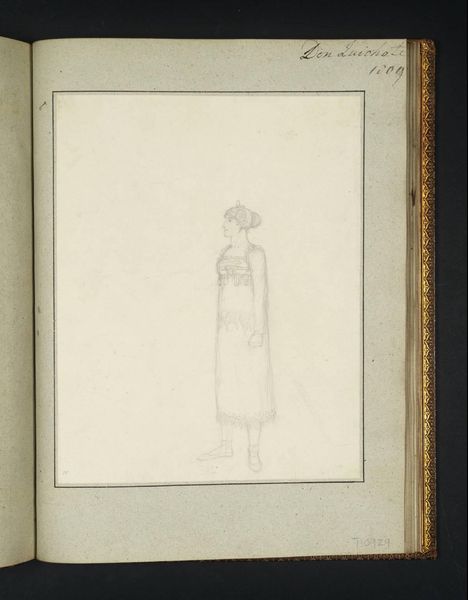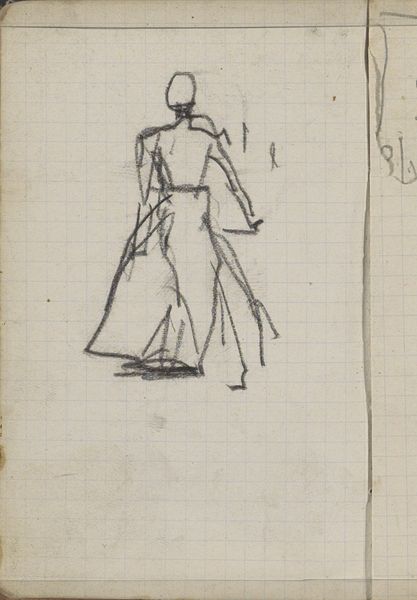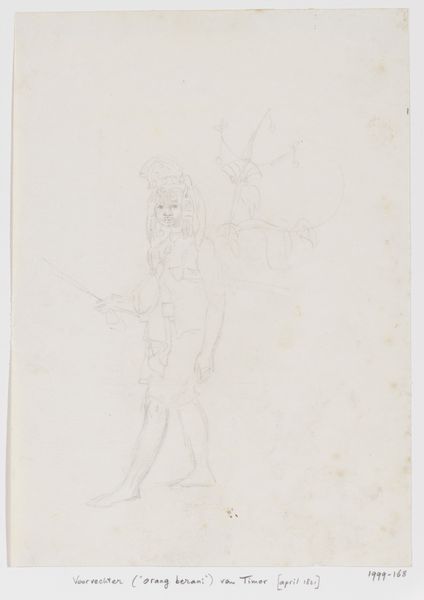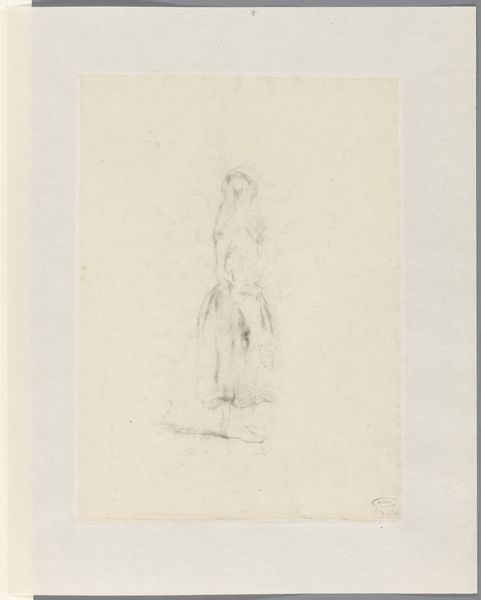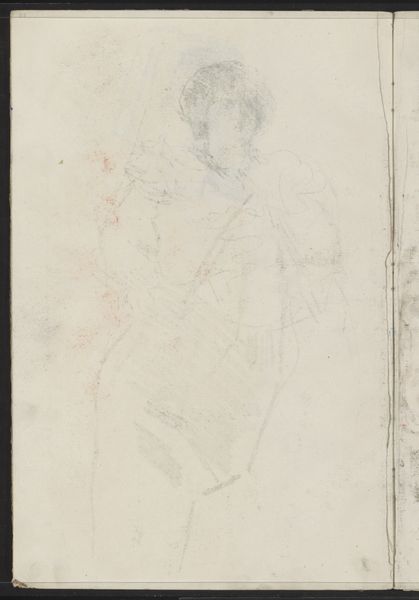
drawing, paper, pencil
#
portrait
#
drawing
#
narrative-art
#
figuration
#
paper
#
form
#
romanticism
#
pencil
#
line
#
academic-art
#
watercolor
Copyright: Rijks Museum: Open Domain
Curator: Here we have a drawing titled "Datum", created in 1816. It is attributed to jonkvrouw Elisabeth Kemper. Editor: My first impression is of ethereality; she seems to be emerging from the very paper itself, drawn with a tentative line. Curator: That's quite fitting. Kemper worked within artistic circles heavily influenced by Romanticism. You see a clear engagement here with classical forms but rendered in a highly personalized way. This was during a period of great social and political upheaval, of course. There's an almost naive return to simple ideals. Editor: Indeed, the simplicity almost carries the impact of a ghostly image. The drapery of her garment appears quite stylized; could this allude to a specific symbolic meaning from classical art? A muse, perhaps, or a representation of idealized femininity? Curator: Possibly. What's most interesting to me, looking at it from a purely art historical point of view, is how it speaks to amateur artistic production among women of her social standing in that period. Art offered them opportunities for expression and self-validation outside of traditional avenues, yet they were still operating within clearly defined cultural and academic norms. Editor: The open stance suggests an offering, the hands presented outward and slightly up. One cannot avoid linking that stance to a need to be understood, even pleading and yearning to be taken seriously as an individual in those historical, sociopolitical confines. Curator: Yes, her agency is subtly presented within this context, the figure is placed on a single sheet of paper with very basic drawing materials, we are dealing with notions of accessibility as well as artistry. Editor: This drawing, for me, embodies that pivotal moment when one questions not just their immediate present but their own position in a longer line of cultural inheritance. Curator: Absolutely. It shows us, in a small drawing, the intersection of personal expression and broader societal constraints. Editor: And for all the academic references, the art transcends to speak of that age old conflict between personal dreams and the reality that history forces on an individual.
Comments
No comments
Be the first to comment and join the conversation on the ultimate creative platform.
